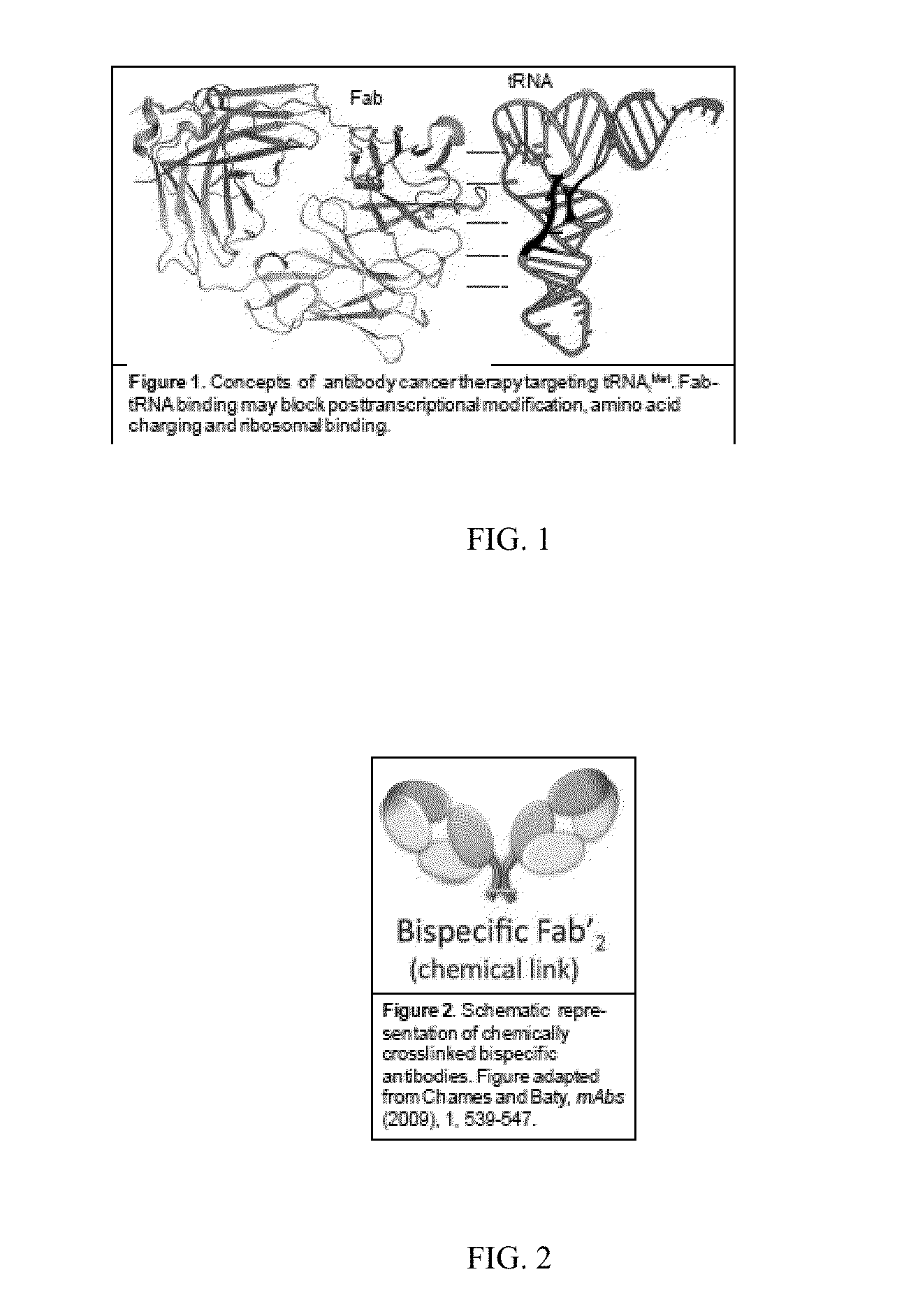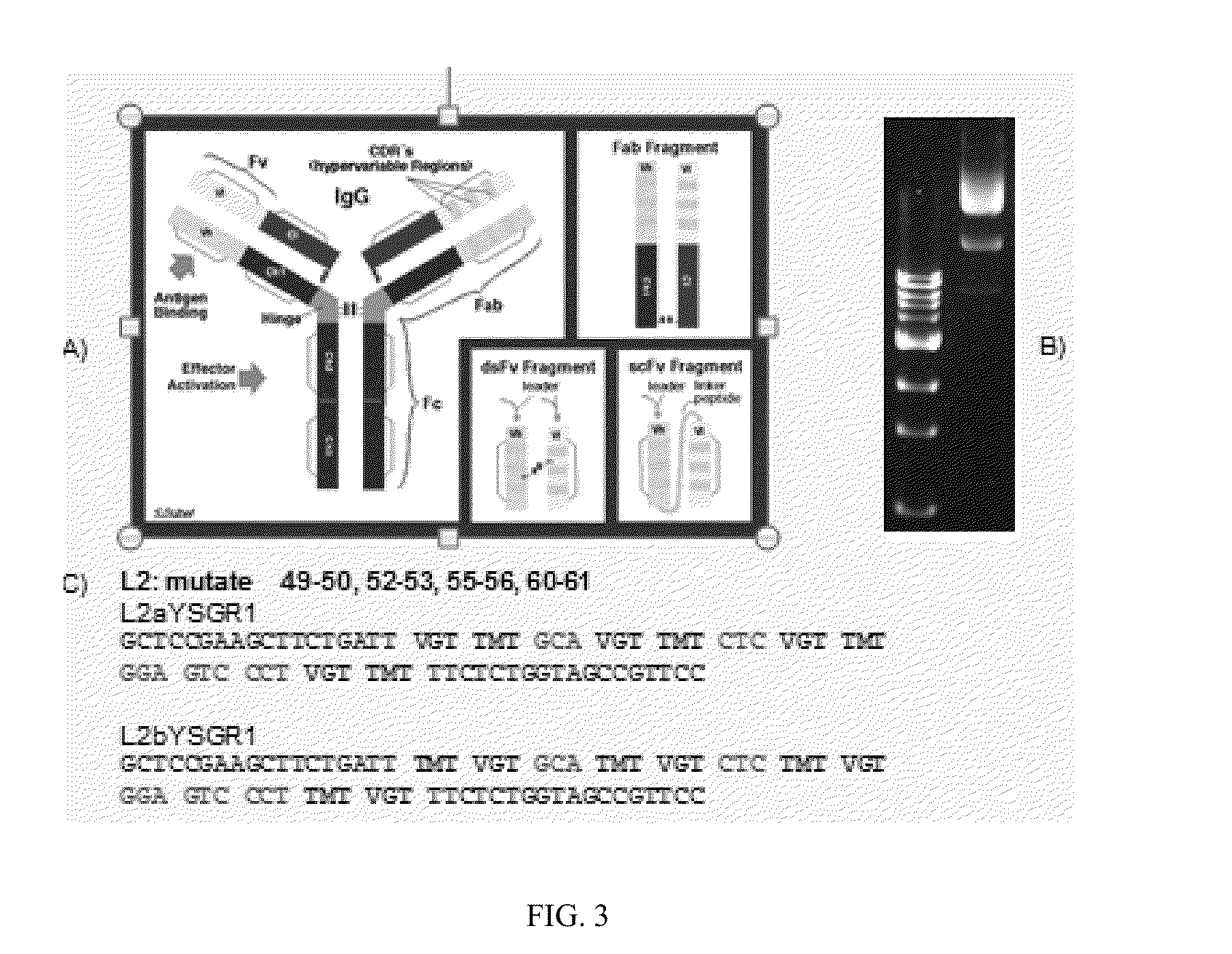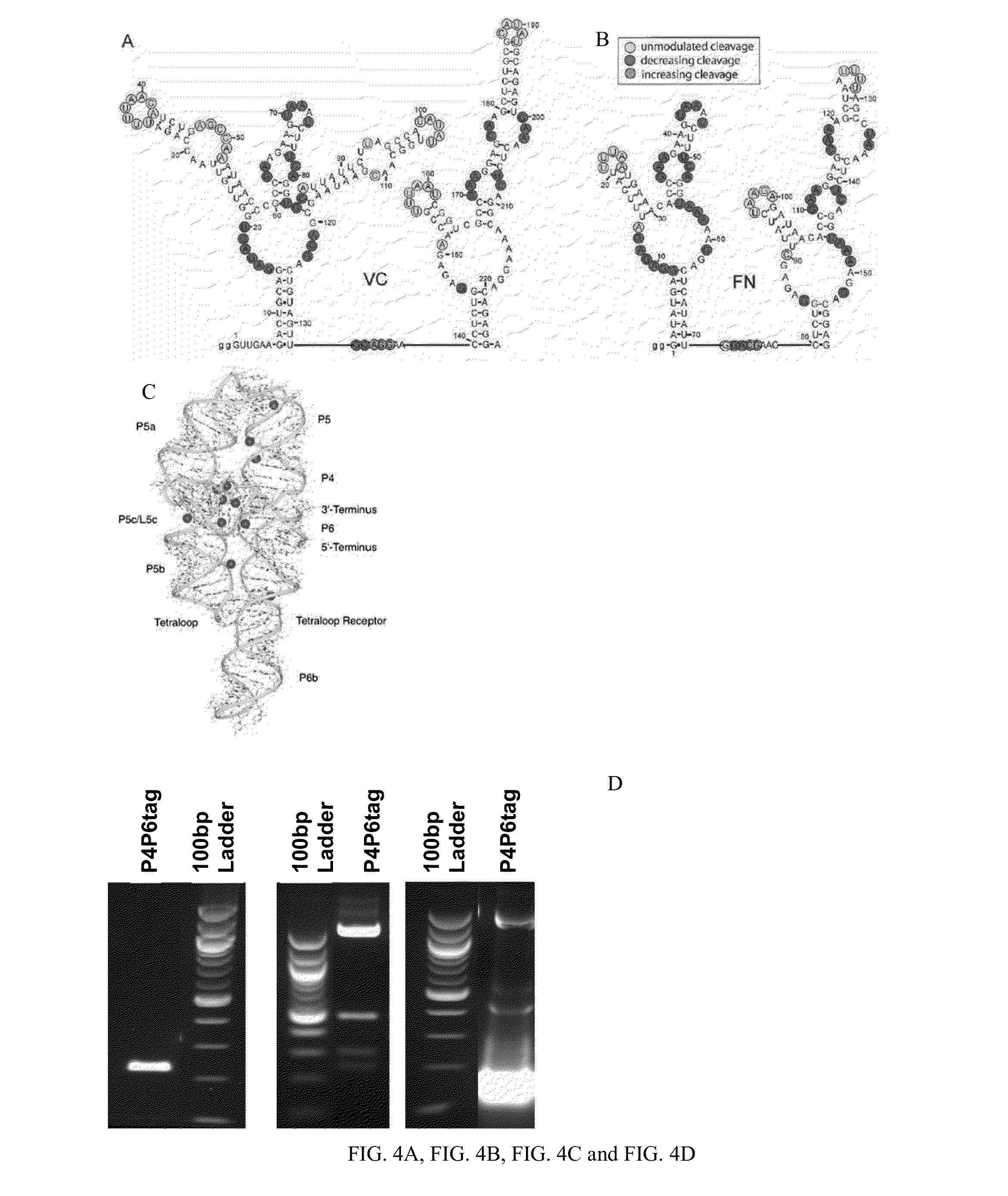Compositions and Methods for Comprising an RNA-Specific Fab Library
a technology of fab libraries and rnas, applied in the field of immunology and molecular biology, can solve the problems of inability to robustly and generalize the targeting approach of structured rnas, the current methods of targeting ncrnas are severely limited, and the difficulty of targeting in vivo, so as to achieve the effect of blocking binding
- Summary
- Abstract
- Description
- Claims
- Application Information
AI Technical Summary
Benefits of technology
Problems solved by technology
Method used
Image
Examples
example 1
J. Example 1
Designing Phage Libraries and Identifying tRNAiMet—Specific Fab
1. Background
[0221]The ncRNAs (non-coding RNAs) fulfill a wide range of functions, including chromatin organization, transcriptional termination, splicing, RNA editing and processing, translational inhibition, and epigenetic regulation. The importance of ncRNAs in these key cellular processes has rendered them valuable and sometimes irreplaceable drug targets. Numerous lincRNAs (long intergenic ncRNAs) have been shown to lead to tumorigenesis. HOTAIR, for instance, targets polycomb repressive complex 2 (PRC2) genome-wide to alter H3K27 methylation and gene expression patterns, resulting in increased cancer invasiveness and metastasis in breast carcinomas3. Overexpression and amplification of miRNAs that target tumor-suppressor genes can also lead to cancer development. One of the well-studied oncomir clusters, miR-17˜92, has been shown to be overexpressed in human lung cancers. Mediating the biogenesis of its...
example 2
K. Example 2
YSGRMin Fab Library and RNA Construct Synthesis for Chaperone-Assisted RNA Crystallography
[0245]In the human genome, 90% of genetic information is transcribed but only a fraction of the subsequent RNA is translated into proteins. RNAs which are not translated into proteins are deemed noncoding RNAs. Relatively little is known about the vast array of noncoding RNAs, although these molecules perform a variety of functions. RNA crystallography is used to study RNA tertiary structure, which gives insight to the function of these noncoding RNAs. Complications associated with RNA crystallography arise due to RNA's instability, possible conformational heterogeneity, and lack of surface functional group diversity.
[0246]A novel technique, Chaperone-Assisted RNA Crystallography (CARC), can aid in crystallization of RNA; synthetic antigen binding fragments (Fabs) act as crystallization chaperones in complex with certain RNAs. A randomized library of synthetic Fabs enriched in all s...
example 3
L. Example 3
Targeting Oncogenic RNAs with Antibodies
[0259]Non-coding RNAs (ncRNAs) have been recognized as important cancer disease markers and therapeutic targets. The ncRNAs often form extensive structures and exert their oncogenic functions by interacting with protein partners, making the RNA-protein interfaces important targets for cancer therapy. However, currently there is a lack of a robust and general approach in targeting structured RNAs. The long-term goal is to develop antibody-based therapeutic drugs targeting structured oncogenic RNAs at the RNA-protein interfaces. Fabs can be engineered to bind RNA structure specifically and block the key RNA-protein interactions important in cancer cell proliferation and tumorigenesis. The present study develops potent Fab (antigen binding fragments) libraries for structured RNA recognition and uses phage display to select specific Fabs binding to a model oncogenic ncRNA, initiator tRNA, for potential cancer pathway mediation. Recentl...
PUM
| Property | Measurement | Unit |
|---|---|---|
| Structure | aaaaa | aaaaa |
| Cell proliferation rate | aaaaa | aaaaa |
Abstract
Description
Claims
Application Information
 Login to View More
Login to View More - R&D
- Intellectual Property
- Life Sciences
- Materials
- Tech Scout
- Unparalleled Data Quality
- Higher Quality Content
- 60% Fewer Hallucinations
Browse by: Latest US Patents, China's latest patents, Technical Efficacy Thesaurus, Application Domain, Technology Topic, Popular Technical Reports.
© 2025 PatSnap. All rights reserved.Legal|Privacy policy|Modern Slavery Act Transparency Statement|Sitemap|About US| Contact US: help@patsnap.com



